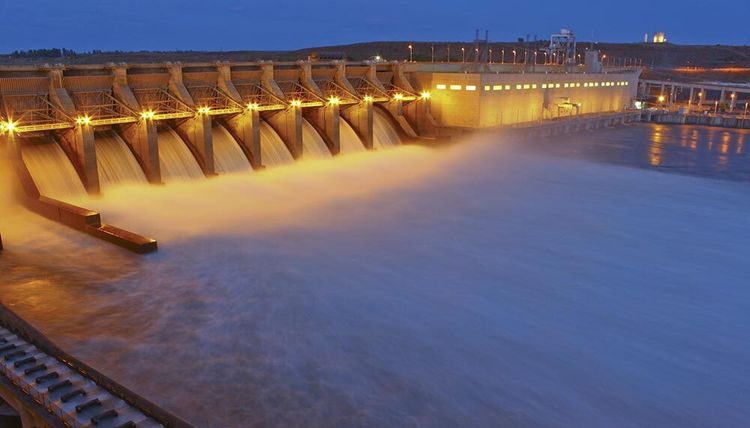Rewilding the Lower Snake : How cultural values of a free flowing ...

The Seattle Times asked the question that if the Lower Snake River Dams were removed and salmon response didn’t meet expectations – then what? The answer encompasses more than benefits to migrating salmon – a functional waterway can have immense value.
The lower Snake River is destined for rewilding for many more reasons than ensuring wild salmon and steelhead do not go extinct. The cultural and ecological values of a free flowing river far exceed those of a reservoir.
The 140 miles of the lower Snake is no exception. When Lower Granite Reservoir reached Lewiston in 1975 – 14,400 acres of bottom lands, 1,125 acres of island habitat and 1,123 riparian acres were inundated under 90,000 surface acres.
Governors, tribes ratify Columbia River Basin pact at White House signing ceremony
The lower Snake River in the 1950s and 1960s has been described as miles of sandy beaches, sturgeon fishing, thick riparian zones packed with chokecherries, hackberries and mulberry trees. The riparian habitat was rich with pheasants, quail and other wildlife. The river spread out into several channels with many islands. Farming and fruit orchards were common as well as hundreds of cultural sites.
A momentous archaeological discovery was made in 1965 — known as the Marmes Rockshelter — at the confluence of the Palouse and Snake rivers that dated 10,000 years before the present. The Army Corps of Engineers constructed a cofferdam around Marmes to keep it from flooding when Lower Monumental Reservoir filled in February 1969, but it failed.
Before the Lower Snake was impounded the Corps documented 63 named rapids encountered by Lewis and Clark in October 1805.
The antithesis of a living river is an impoundment, i.e. slack water. Reservoirs slow velocity, modify sediment transport, increase water temperature and transform floodplains that disrupt river continuity.
The four lower Snake River dams are run-of-river dams – they have little storage and no flood control but collectively create 140 miles of slack water that prior to 1961 was a vibrant functional river. Migrating juvenile salmon depend on the enhanced water velocity to carry them toward the Pacific Ocean to boost survival.
The Corps predicts dam removal will replicate the Elwha in Washington State’s Olympic Peninsula that included significant negative short-term effects followed by long-term benefits. John McMillan, a Trout Unlimited scientist, who studied rewilding the Elwha envisions the lower Snake – an existing canal-like reservoir complex will evolve into a river with islands, side channels, riffles, pools and rapids. Gravel bars connected to ground water will create cold – water refuges.
Rewilding the lower Snake River is the best inclusive solution for all involved, especially wild salmon and steelhead. A healthier ecosystem will provide longer-term benefits compared to the status quo. A warming climate will continue to degrade the 140 miles of unhealthy reservoirs.
Thirty miles of toxic blue-green algae appeared in the lower Snake the fall of 2023. Alex Fremier, an environmental science professor at Washington State University, said the bloom on the Lower Snake is “unusually large” for a river. Dammed waters and blooms are certainly connected. No toxic algae were observed in the free-flowing Snake above Lower Granite Reservoir.
NOAA’s – Rebuilding Interior Columbia Basin Salmon and Steelhead – describes multiple benefits of rewilding the Lower Snake River:
Removing the lower Snake River dams would directly improve floodplain connectivity, natural sediment distribution and riparian habitat conditions benefiting both aquatic and terrestrial species, improve spawning habitat for species such as white sturgeon and fall Chinook salmon, and restore free-flowing migratory corridors for bull trout, lamprey and sturgeon. A floodplain–connected valley is inherently more diverse and productive, not only for aquatic species, but across and entire floodplain. While these benefits are independently valuable, they are only a small fraction of the potential benefits that restored riverscapes can be provide in the face of climate change.
White sturgeon migration and passage in the Snake River is limited. Removing the four lower Snake dams would provide free passage and access to additional spawning areas allowing for viable natural recruitment and continuous connectivity with areas upstream in the Snake and Clearwater Rivers. Spawning and subsequent juvenile production is currently constrained to the free-flowing reach of the Snake River between the upper end of Lower Granite Reservoir and Hells Canyon Dam. As there is currently no upstream passage for adult white sturgeon at the dams, removing the lower Snake River dams would ultimately allow unrestricted movement of juvenile and adult white sturgeon throughout the expanded free-flowing reach from McNary Dam to Hells Canyon Dam.
Restoration of natural riparian conditions along the Snake River after dam removal will increase habitat for terrestrial species (e.g., deer and waterfowl) and amphibians over time. The improved riparian conditions, combined with natural flow regimes in the Snake River are expected to increase the presence of cottonwood galleries and other riparian shrubs and vegetation, which are limited in the region. These habitats are key for avian species such as osprey, eagles, and herons.
Mainstem river rehabilitation, together with stream restoration across the tributary environment, is needed.
GET THE MORNING HEADLINES DELIVERED TO YOUR INBOX
Our stories may be republished online or in print under Creative Commons license CC BY-NC-ND 4.0. We ask that you edit only for style or to shorten, provide proper attribution and link to our web site. AP and Getty images may not be republished. Please see our republishing guidelines for use of any other photos and graphics.
























































